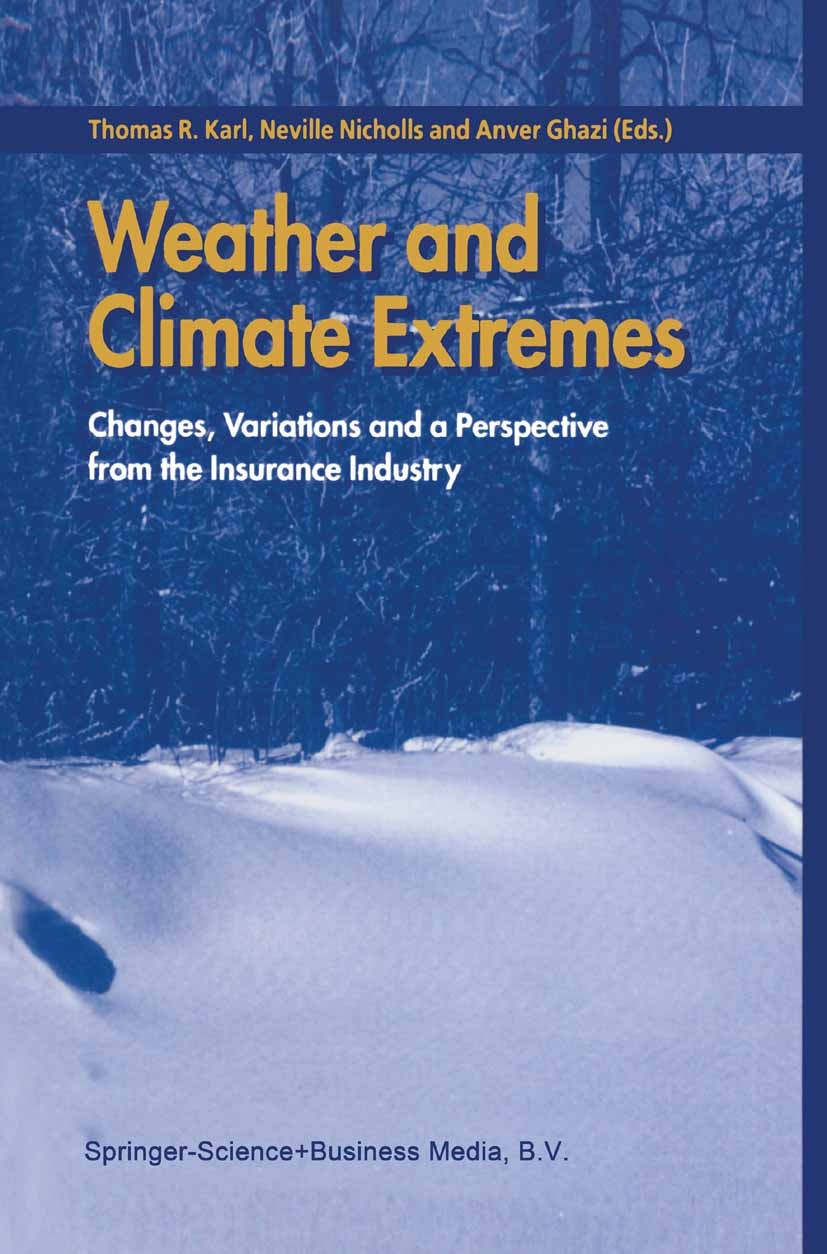南非选定地点日极端温度的预估变化
IF 6.9
1区 地球科学
Q1 METEOROLOGY & ATMOSPHERIC SCIENCES
引用次数: 0
摘要
由于气候变化,极端事件,特别是高温天气,预计将会增加。因此,必须进行局部研究,以量化潜在变化的程度,以便能够影响到适当的规划,特别是有效的适应措施。本研究通过分析协调区域降尺度实验(CORDEX)模式集合数据集的一个子集,分析了南非22个地点未来气候变化情景的年极端日最高气温。根据南非气象局1976-2005年期间的观测资料验证了多模式模拟。对RCP4.5和RCP8.5两个代表性浓度通路进行了中期(2036-2065)和远期(2066-2095)两个研究期的分析。对模式数据进行了偏差校正,以校正模拟历史气候数据,使其更符合观测值的特征。虽然该方法包括方差调整,但对极端值的系统性低估仍然很明显。将广义极值分布拟合到偏差校正后的预估中,并估计了10年、50年至100年的回归期分位数。在中期和远期两种代表性浓度路径下,回归期分位数值都可能增加,在最高排放情景下,本世纪末回归期分位数值的最大增幅将出现。所有台站的最高气温高于特定临界阈值的天数频率都有所增加,在RCP8.5情景下的一些台站预计到本世纪末每年将有200(100)天的气温高于32°C(35°C),较基线增加约70至150天(14至83)。对于相同的情景,大多数台站38°C的回归周期预计将短于一年。综上所述,并考虑到预估变化的严重程度可能被低估,即回归期分位数值过低,总的含义是,未来南非大部分地区很可能经历极端高温天气的强度、持续时间和频率大幅增加,可能对相关社会经济部门造成严重后果。我们建议未来的研究,包括全套的CORDEX数据,以优化本研究的结果。本文章由计算机程序翻译,如有差异,请以英文原文为准。
Projected changes in daily temperature extremes for selected locations over South Africa
Extreme events, particularly very high temperatures, are expected to increase because of climate change. It is thus essential that localised studies be done to quantify the magnitude of potential changes so that proper planning, especially effective adaptation measures, can be affected. This study analysed annual extreme daily maximum temperatures for future climate change scenarios at 22 locations in South Africa, through analysis of a subset of the Coordinated Regional Downscaling Experiment (CORDEX) model ensemble datasets. The multi-model simulations were validated against observational data obtained from the South African Weather Service for the period 1976–2005. Two study periods of mid- (2036–2065) and far-future (2066–2095) were analysed for two Representative Concentration Pathways, i.e., RCP4.5 and RCP8.5. Bias correction was done on the model data to correct simulated historical climate data, to be more characteristic of observed measurements. While the method included adjustment for variance, systematic underestimations of extremes were still evident. The Generalized Extreme Value distributions were fitted to the bias-corrected projections, and 10-, 50- to 100-year return periods quantile values were estimated. The return period quantile values are likely to increase under both Representative Concentration Pathways in the mid- and far-future periods, with the largest increase in return period quantile values set to occur towards the end of the century under the highest emission scenario. All stations showed an increase in the frequency of days with maximum temperatures above specific critical thresholds, with some stations under the RCP8.5 scenario projected to experience temperatures of greater than 32°C (35°C) for more than 200 (100) days per year by the end of the century, an increase from a baseline of approximately 70 to 150 (14 to 83). For the same scenario, Return periods for 38°C for most stations are projected to be shorter than a year. From the above and considering the likely underestimation in the severity of the projected changes, i.e. too low return period quantile values, the general implication is a strong likelihood that most places in South Africa is likely to experience a strong increase in the intensity, duration, and frequency of very hot extremes in future, with potentially dire consequences to relevant socio-economic sectors. We suggest that future research, comprised of the full set of CORDEX data be conducted to optimise the results of this study.
求助全文
通过发布文献求助,成功后即可免费获取论文全文。
去求助
来源期刊

Weather and Climate Extremes
Earth and Planetary Sciences-Atmospheric Science
CiteScore
11.00
自引率
7.50%
发文量
102
审稿时长
33 weeks
期刊介绍:
Weather and Climate Extremes
Target Audience:
Academics
Decision makers
International development agencies
Non-governmental organizations (NGOs)
Civil society
Focus Areas:
Research in weather and climate extremes
Monitoring and early warning systems
Assessment of vulnerability and impacts
Developing and implementing intervention policies
Effective risk management and adaptation practices
Engagement of local communities in adopting coping strategies
Information and communication strategies tailored to local and regional needs and circumstances
 求助内容:
求助内容: 应助结果提醒方式:
应助结果提醒方式:


